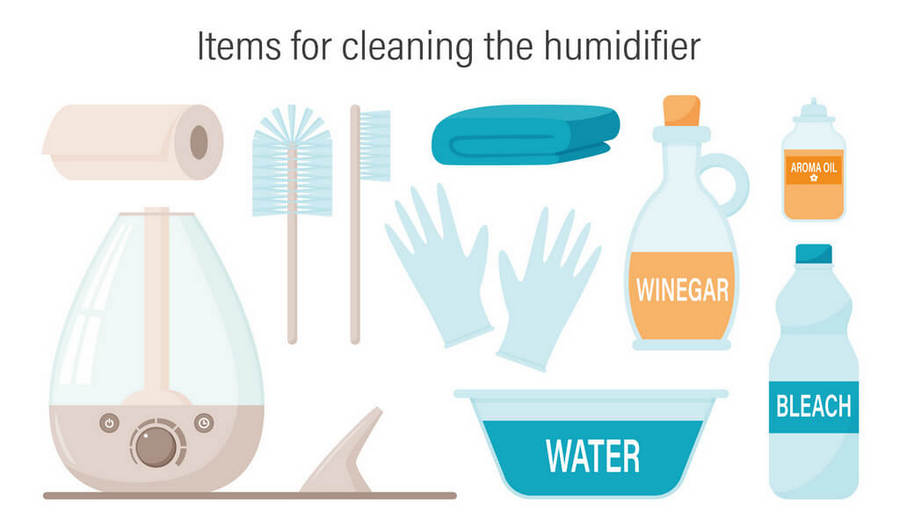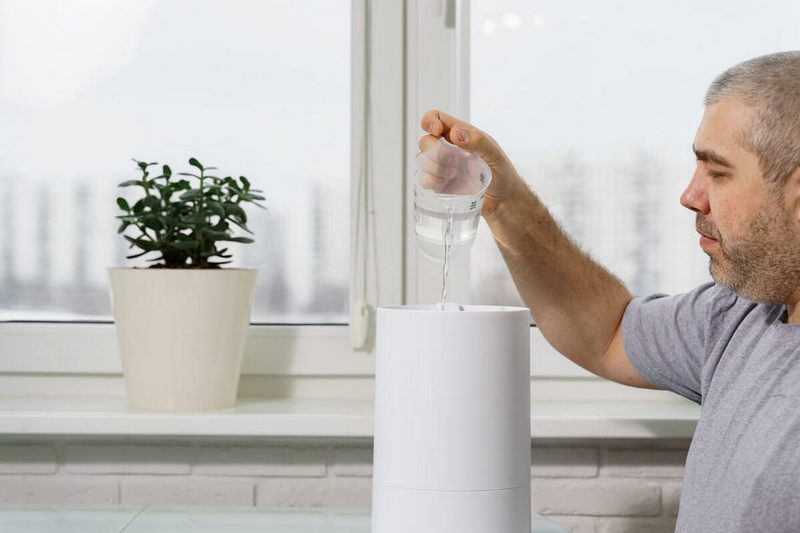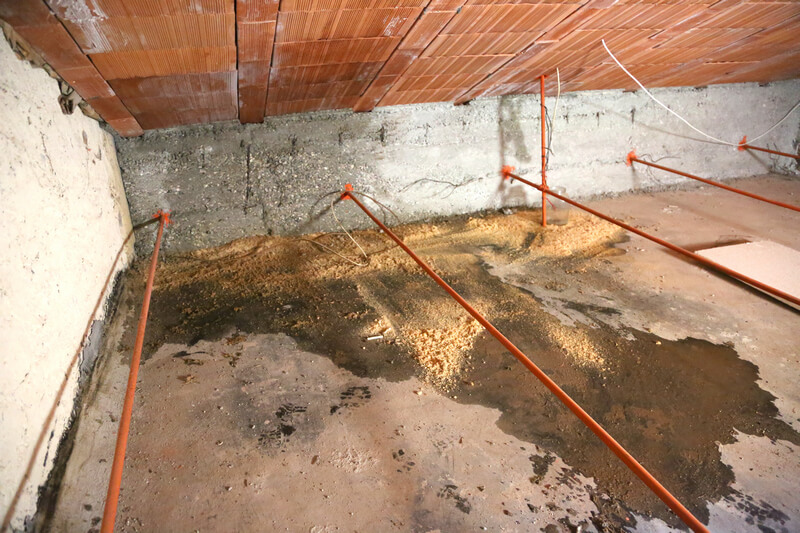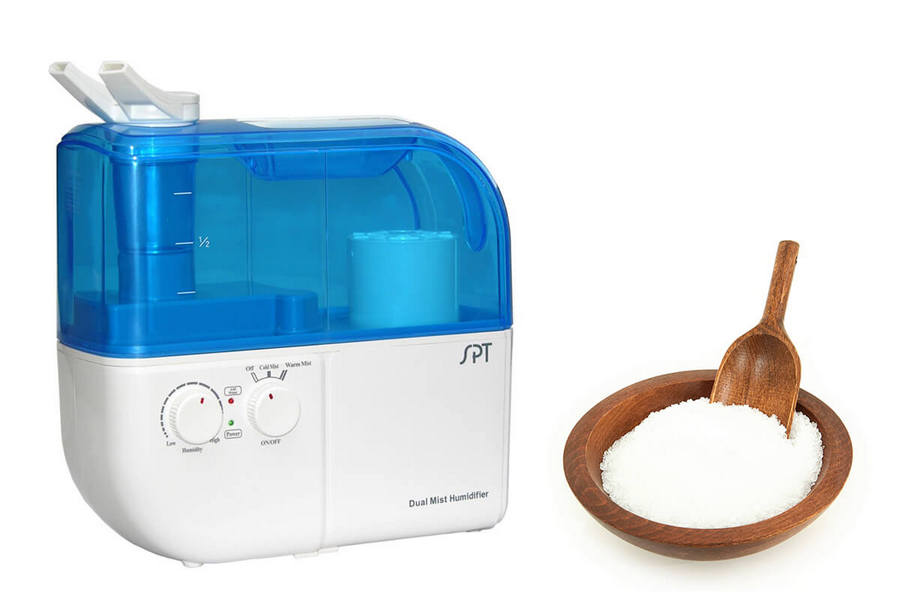Has your humidifier been sitting peacefully at your house for months without causing you any trouble?
It gives you clean air, prevents allergies, and keeps you moisturized. What else can you ask for, right? But have you ever noticed a light layer of slime settling in your humidifier? You may have seen it sticking on the sides or on the bottom of the water tank.
This slime changes colors, and before you know it, you see some pink stuff peeking through your humidifier. We call it the “pink mold”. Thankfully, pink mold in a humidifier is common and effortless to remove.
Let’s explore what pink mold is, how it is formed, and how you can get rid of it.
Read Also: The Best Room Humidifier That Doesn’t Leave White Dust
Why Does My Humidifier Turn Pink?
Mold occurs in different varieties of colors ranging from black to green, and some even in shades of pink, red, orange, purple, and so on. Among these, pink mold happens to be the most prevalent mold in humidifiers.
It is a type of water-borne bacteria that occurs mostly in pink color. Essentially, there are three different kinds of pink mold:
- Serratia marcescens: This pseudo-mold is, in fact, not really a mold! It is a bacteria that grows around bathroom showers, washbasins, and toilets. They feed on shampoo and soap residue, making bathrooms their ideal habitat.
- Aureobasidium pullulans: Also fairly common in washrooms, A. pullulans can grow on organic matter like wood and plants. It is yellow or white at first, and then eventually turns pink.
- Fusarium: These molds are fond of plants and are unlikely to infest your home.
If you’re trying to identify the type of pink mold in your humidifier, it’s most likely A. pullulans. Don’t freak out; they are not as daunting as they sound! However, long exposures can be harmful, so it is better to get rid of them ASAP.
As to how these pink molds form, don’t fret about your cleaning habits or housekeeping skills. In most cases, there is seldom anything you can do to prevent it.
Humidifiers work by drawing water from the reservoir tanks and spraying them in the air. Since molds and bacteria find damp and dark places an ideal location to grow, the water reservoir tank of your humidifier is easily their favorite spot.
Read Also: Best Water-Based Air Purifier Reviews
Is Pink Mold in Humidifier Dangerous?
While pink molds in your house don’t pose an immediate threat, they can still be dangerous and have health hazards.
When exposed for long periods of time, these molds can be the cause of respiratory, urinary, and gastrointestinal infections. People with preexisting respiratory conditions are more susceptible to further complications.
A. Pullulans developing in the humidifiers may buildup around the house for weeks before they catch attention.
Prolonged exposure to this pink mold can cause hypersensitivity pneumonitis, also known as “humidifier lung”. The symptoms of this condition include a cough, difficulty breathing, and fever.
Difficulty in breathing occurs when your lungs become inflamed, which leads to permanent scarring on your lungs. So if anyone at your home gets sick with symptoms that are identical to that of fever or cold, it is time to clean that dirty humidifier!
Related: What Is the Black Stuff in My Humidifier?
How Do I Get Rid of Pink Mold in My Humidifier?

Pink mold can be easily removed by yourself if you are healthy and show no signs of pneumonitis. Before you clean, make sure you gear up accordingly. Wear goggles, gloves, and an N-95 respirator mask to prevent irritation.
However, if you have a respiratory condition, it is better to contact a professional.
You can get rid of that pink mold sitting in your humidifier by following some basic steps:
- First of all, take out the plug of your humidifier from the socket and remove its tank that is located at the base.
- Next, you need to pick a cleaner for the tank. You can go for a bleach solution or simply fill the water tank with either vinegar or hydrogen peroxide.
- Let the fluid settle in the humidifier’s tank for around a half-hour to help it break up the mold and remove it easily.
- After half an hour, empty the contents of your tank and then rinse it with lukewarm water.
- Allow it to dry thoroughly for some time, and then clean the humidifier base by using the san of peroxide/vinegar solution mixed with water.
- Apply the solution with a sponge or cleaning cloth and gently scrub off the pink buildup.
- Finally, wipe the surface with clean water.
Tips to Prevent Pink Mold in Humidifier
Here are some quick tips that can help prevent pink mold and residue:
Refill the Tank Every Day
One of the most prevalent guidelines for humidifiers is to refill the water tank every day with clean water so that it doesn’t remain stagnant for long periods.
Clean Your Humidifier
Keep your humidifiers clean by rinsing the unit with hot water and vinegar every once a week. Don’t use chemical cleaners regularly as they can damage the machine. Dry the humidifier with a clean towel, or simply let it air dry to make sure there isn’t any excess buildup of pink residue.
Use Disinfectants
To completely ensure the prevention of pink mold growth in your humidifiers, add some effective cleaning additives to your humidifier. You can buy humidifier tablets designed to prevent mold and lime buildup inside the humidifier.
Add Tea Tree Oil
A natural disinfectant, a few drops of tea tree oil into the humidifier, will not only prevent the growth of pink mold but also acts as a breathing aid for people with respiratory conditions. Another pro is that it doesn’t harm the machine like other cleaning agents such as bleach.
The Final Words
Pink mold accumulated in a humidifier is a common occurrence. While it may look threatening at first, it can be effortlessly removed if you clean your humidifier thoroughly.
You can prevent their growth by keeping fresh water in the humidifier and by regularly inspecting the insides of your humidifier. We recommend using distilled water since they have minimal chances of bacterial growth.
Remember that pink molds can make you sick if not treated for a long time, so it is necessary to take strict measures once you see the pink stuff. It is better to catch the culprit before they get the chance to invade your living space!







